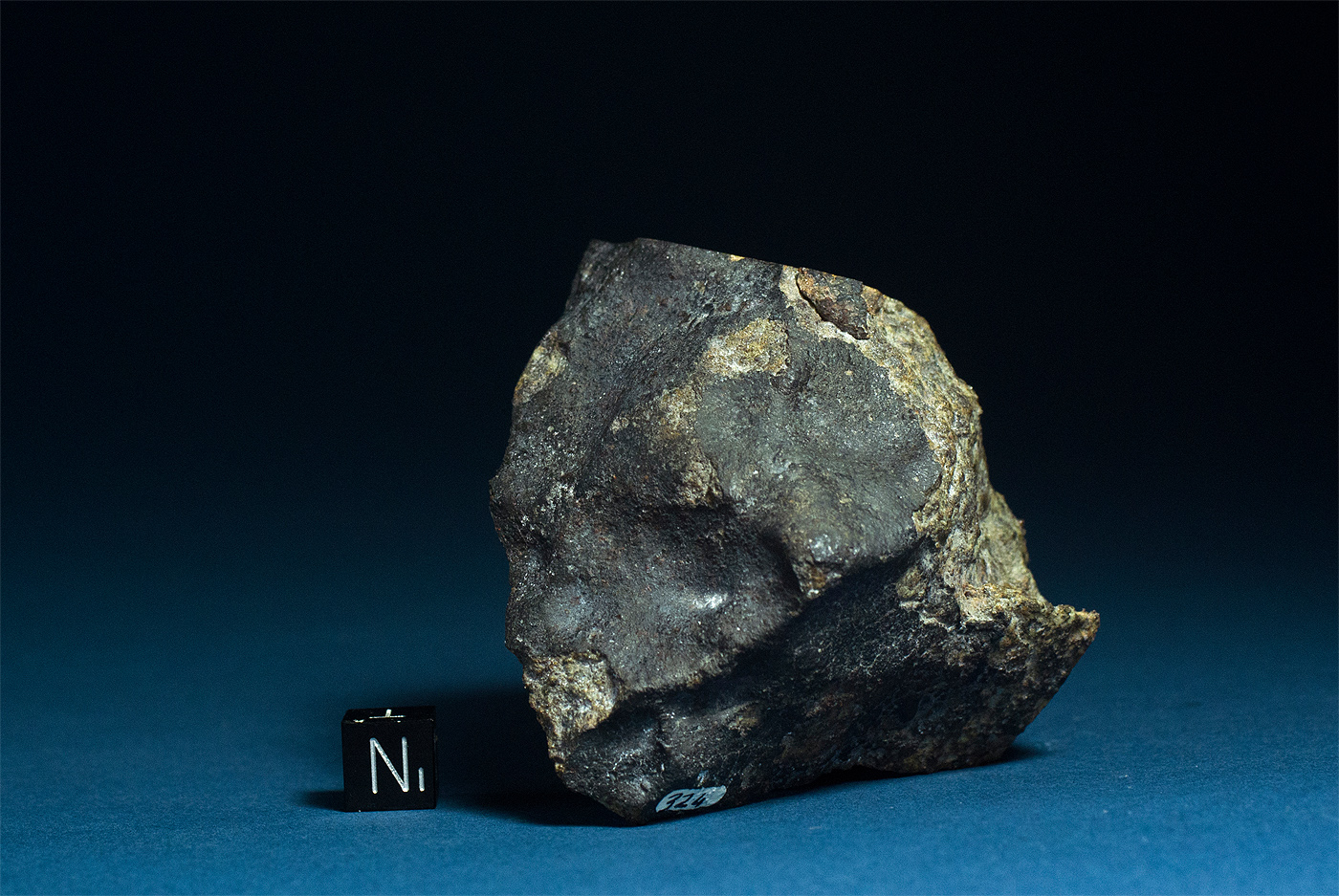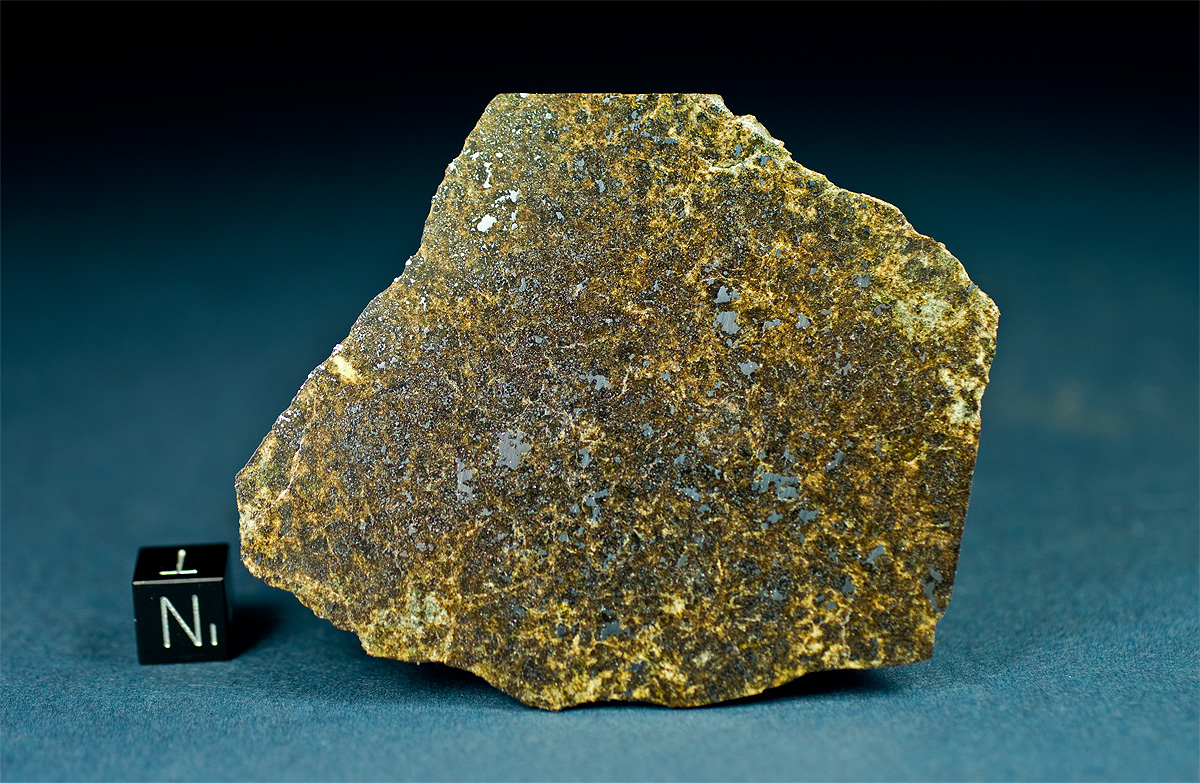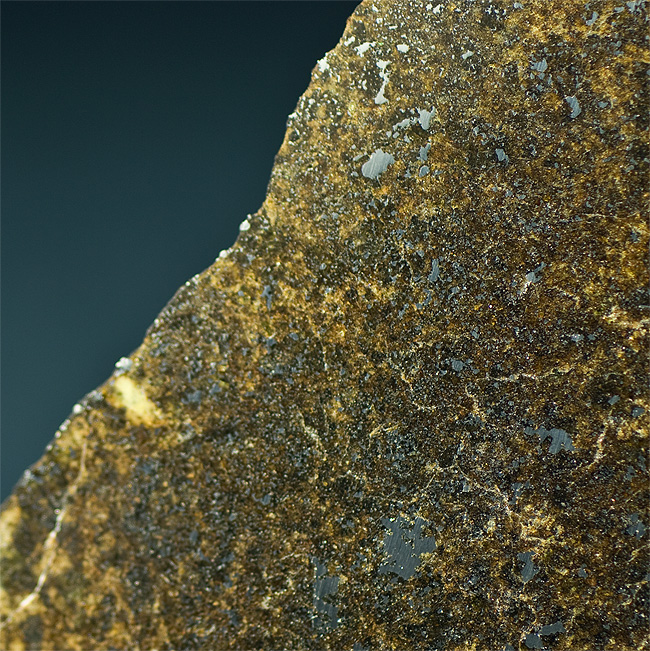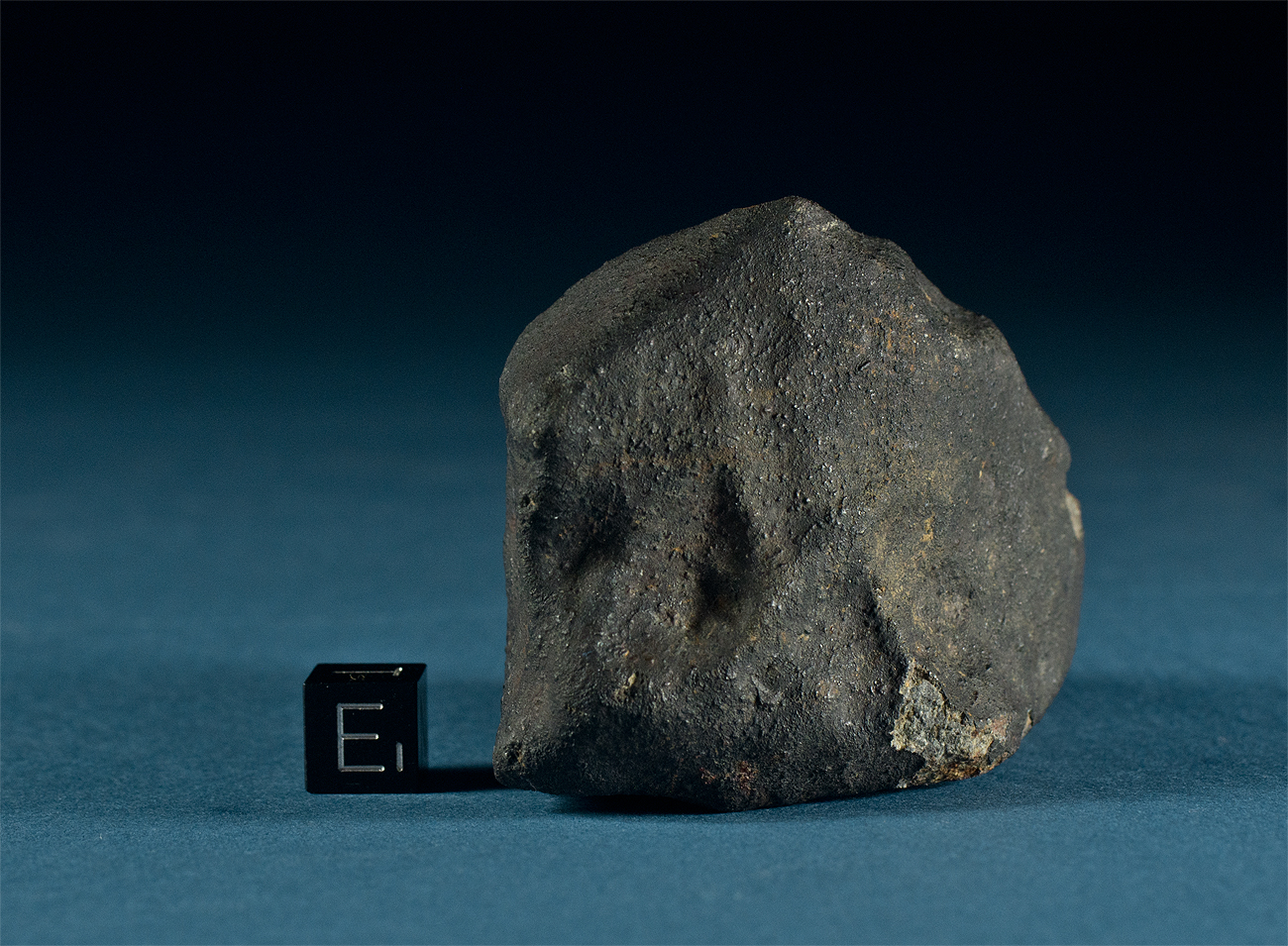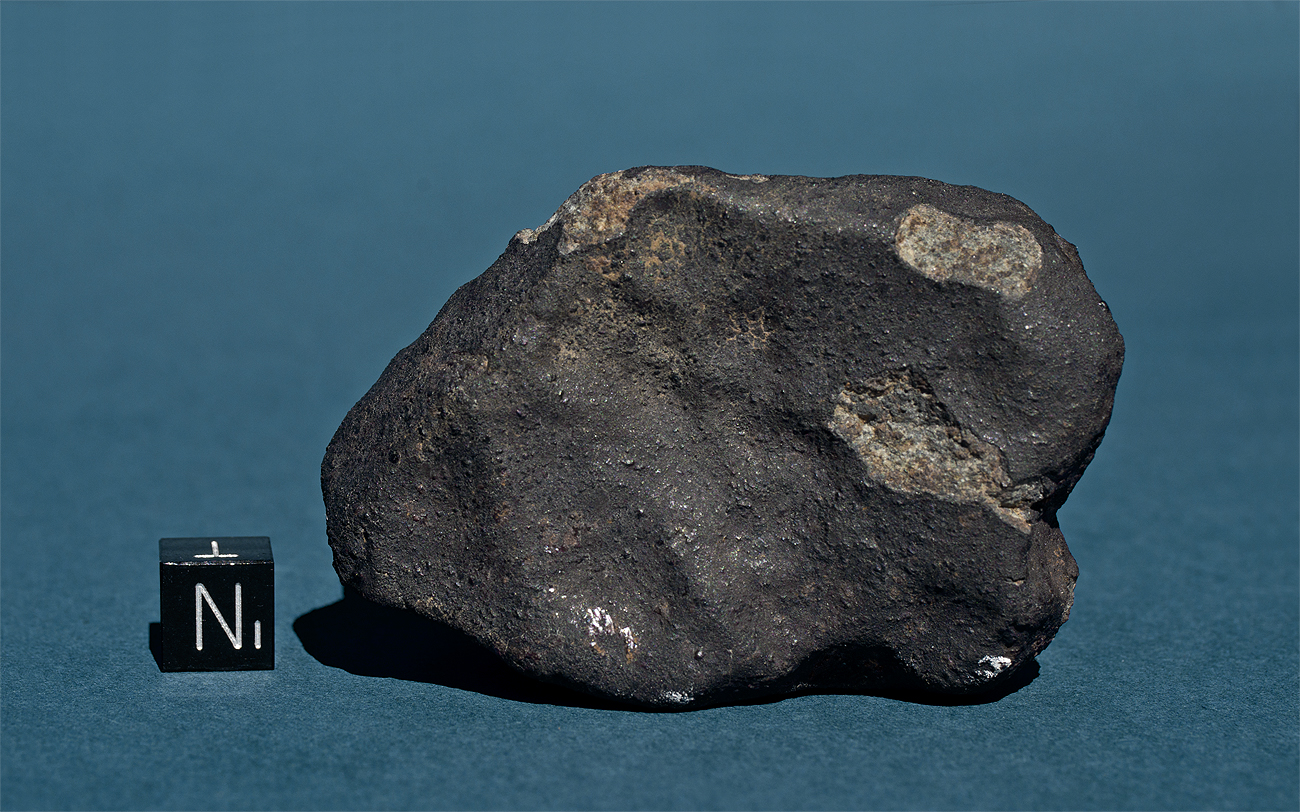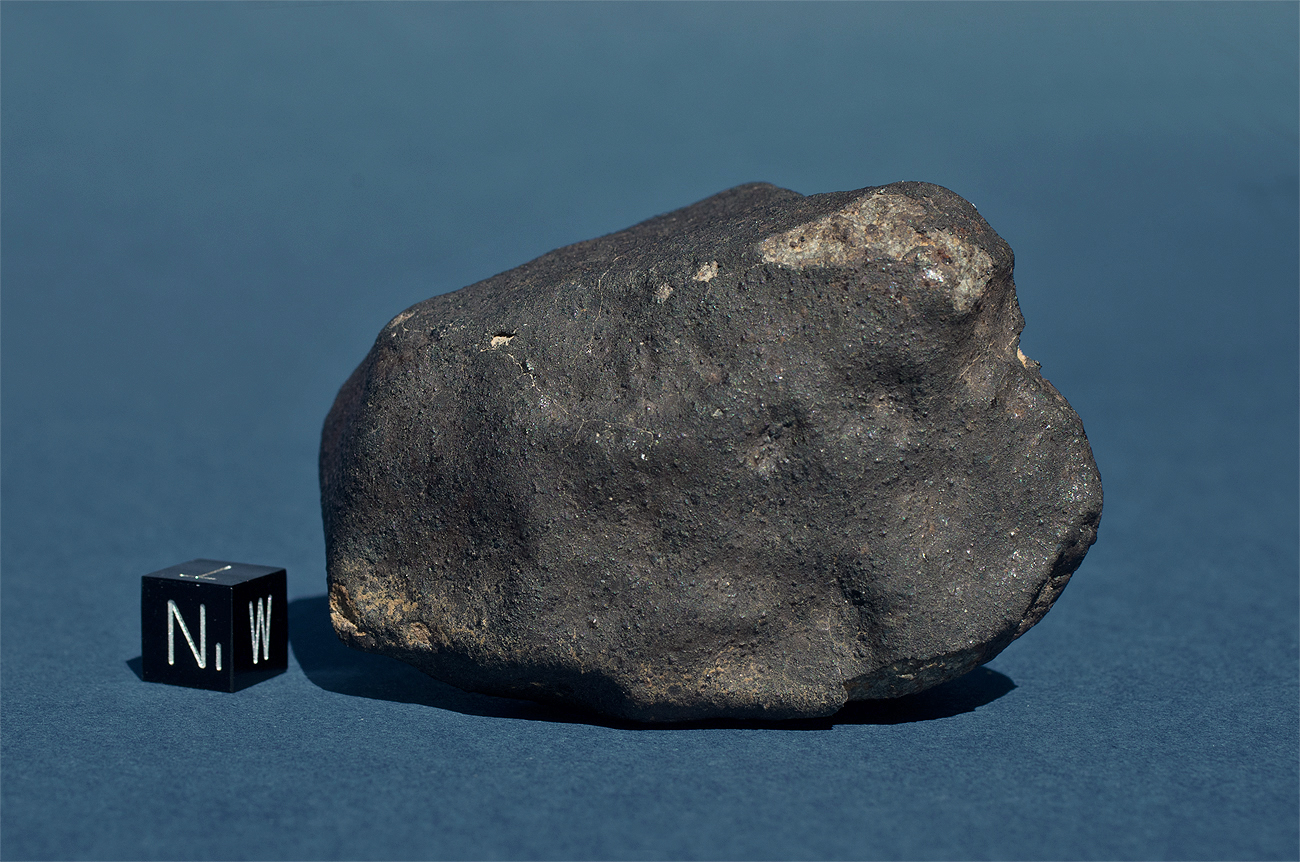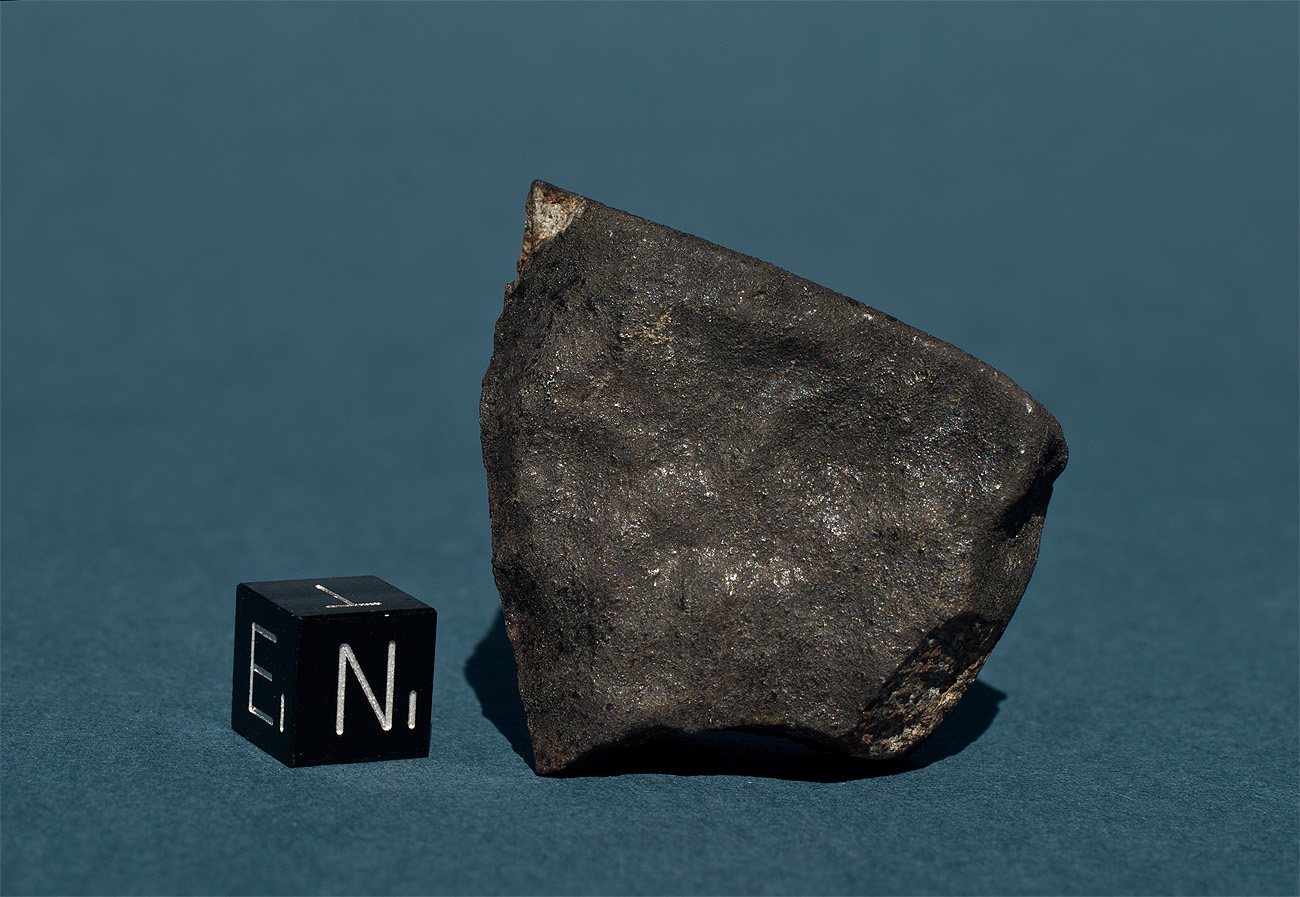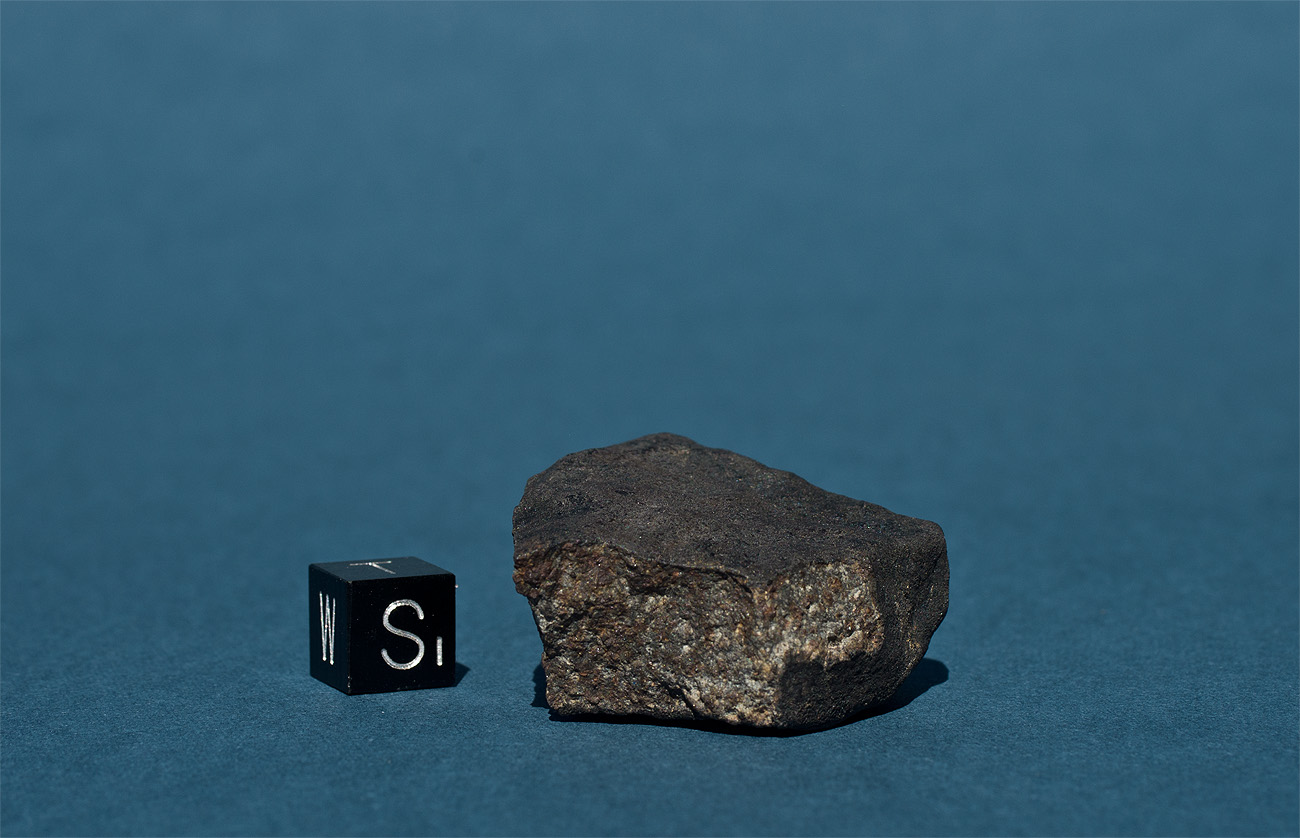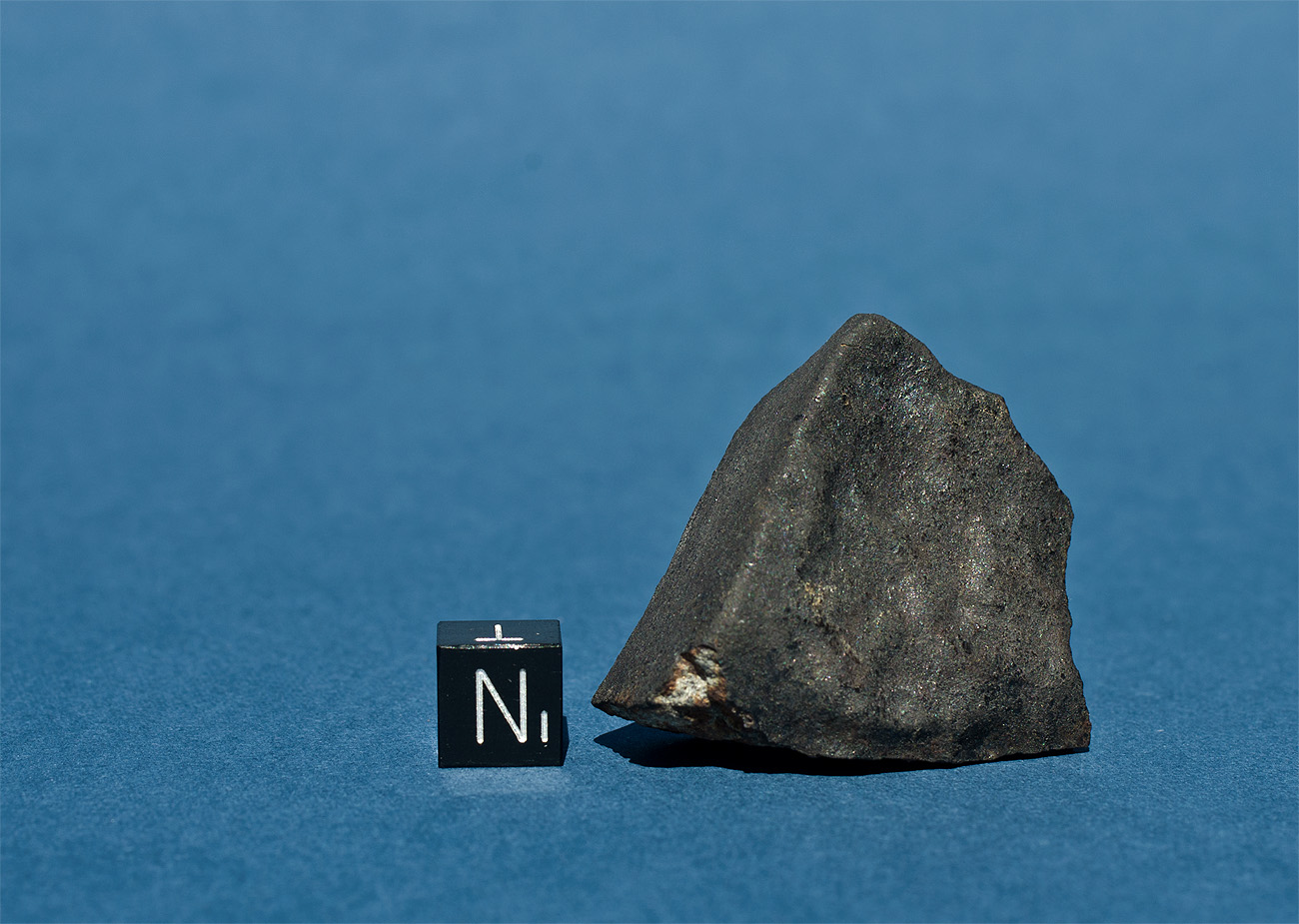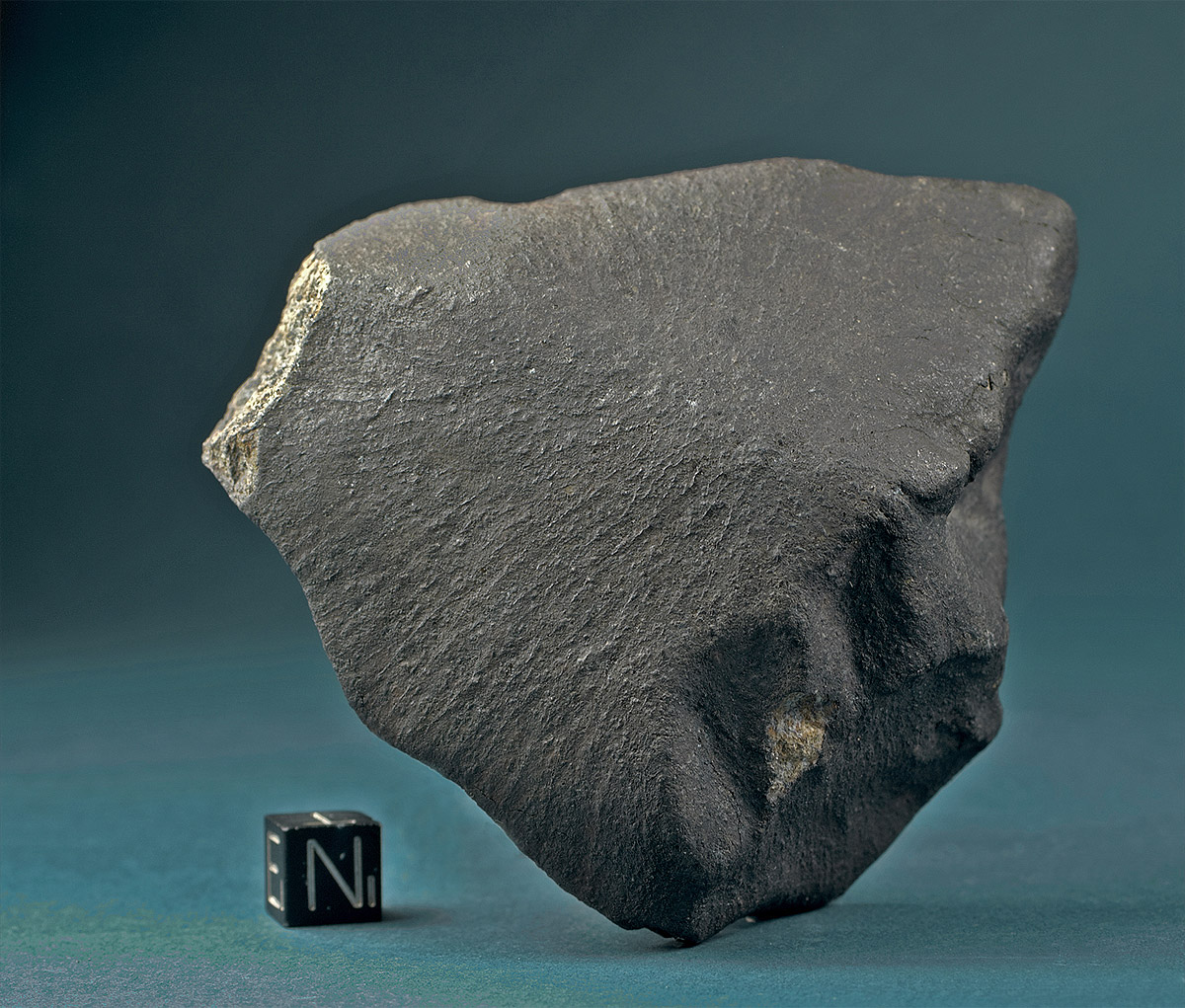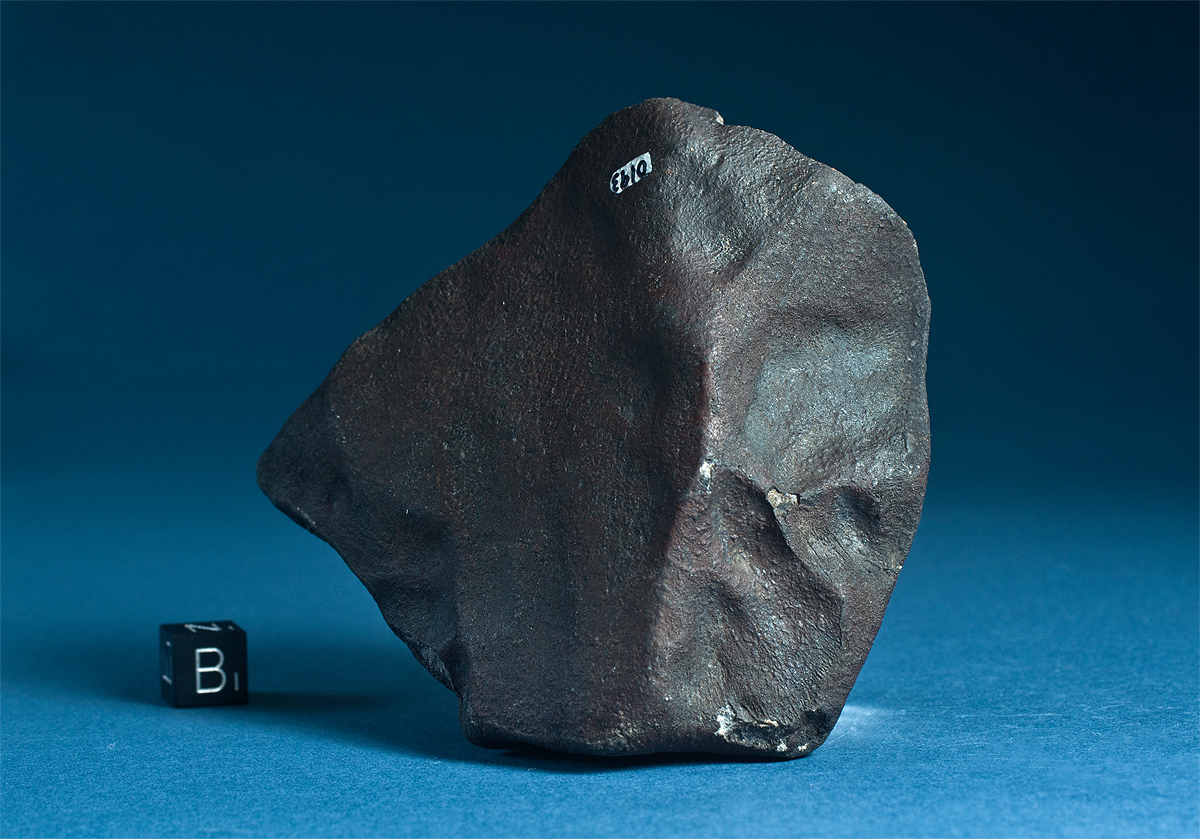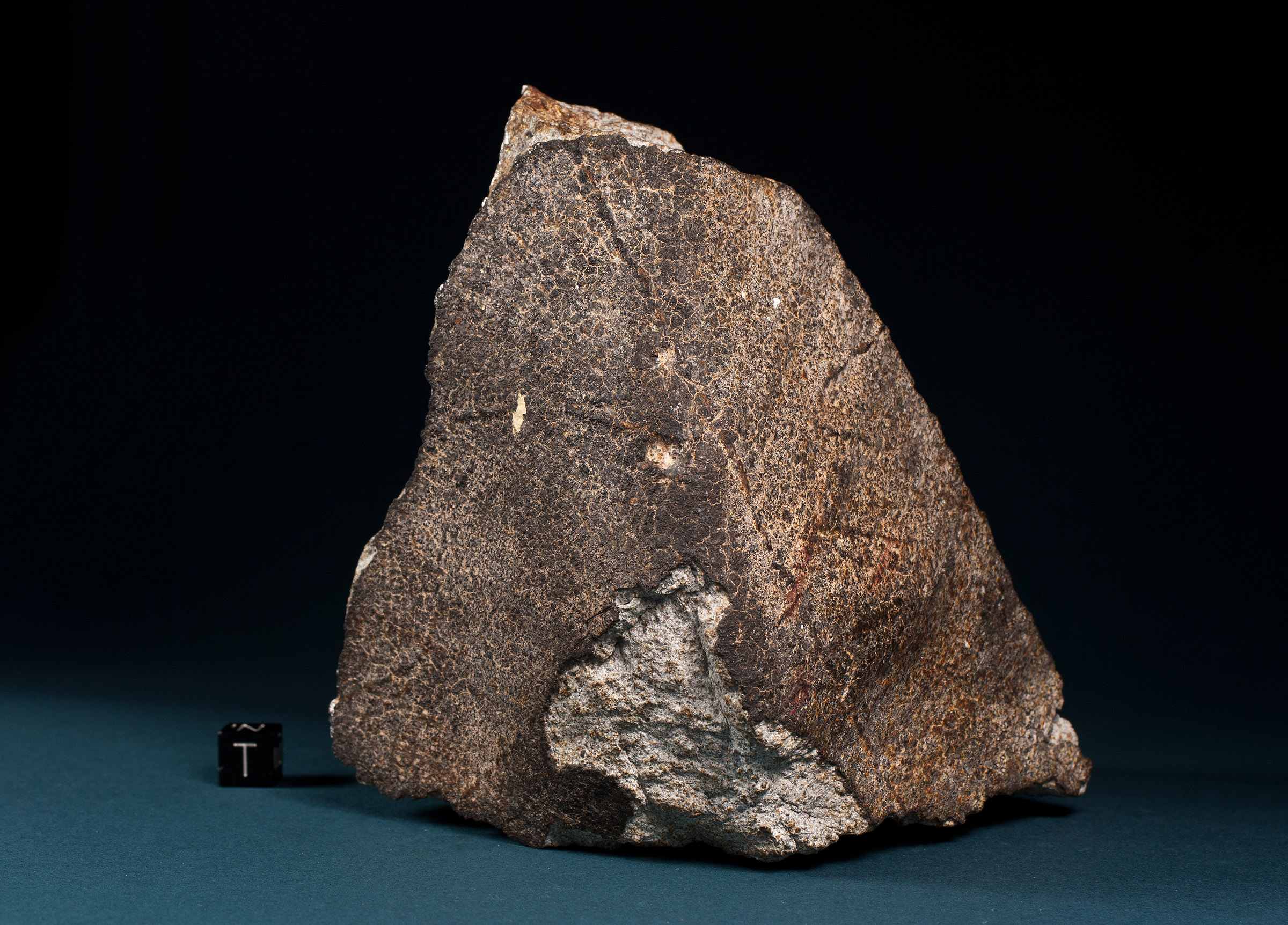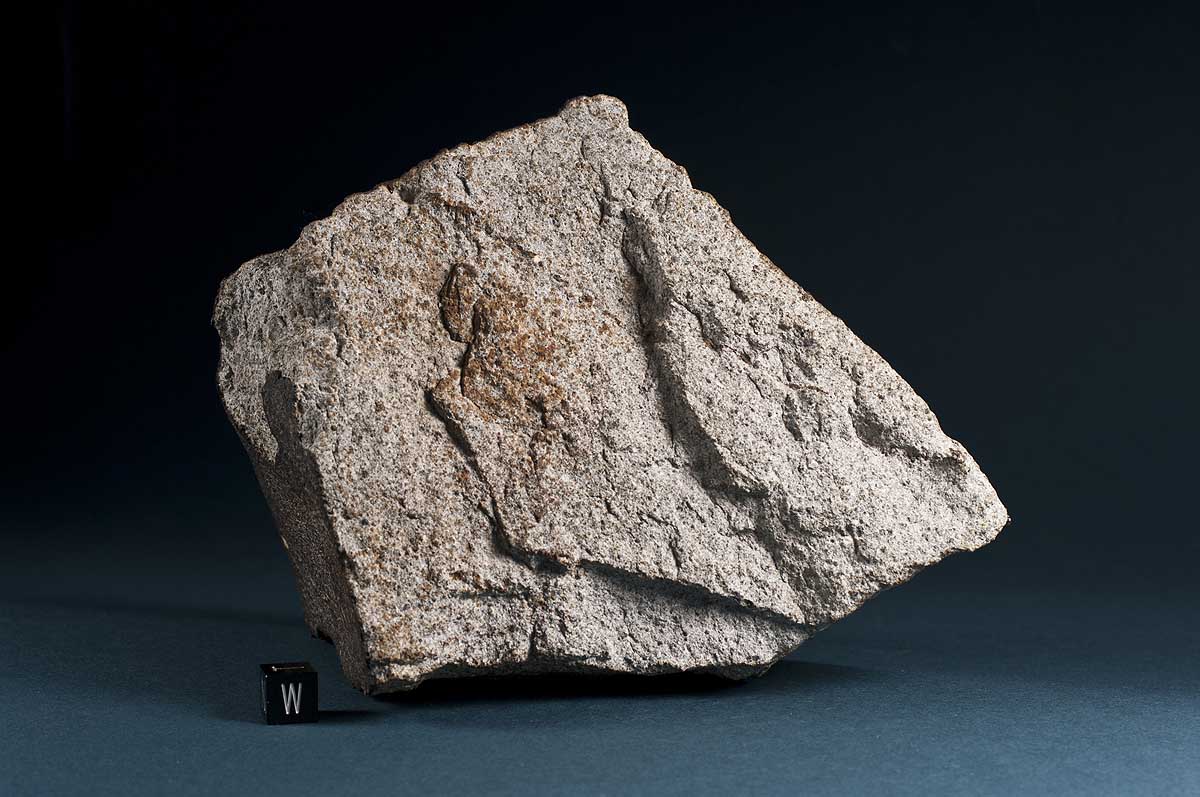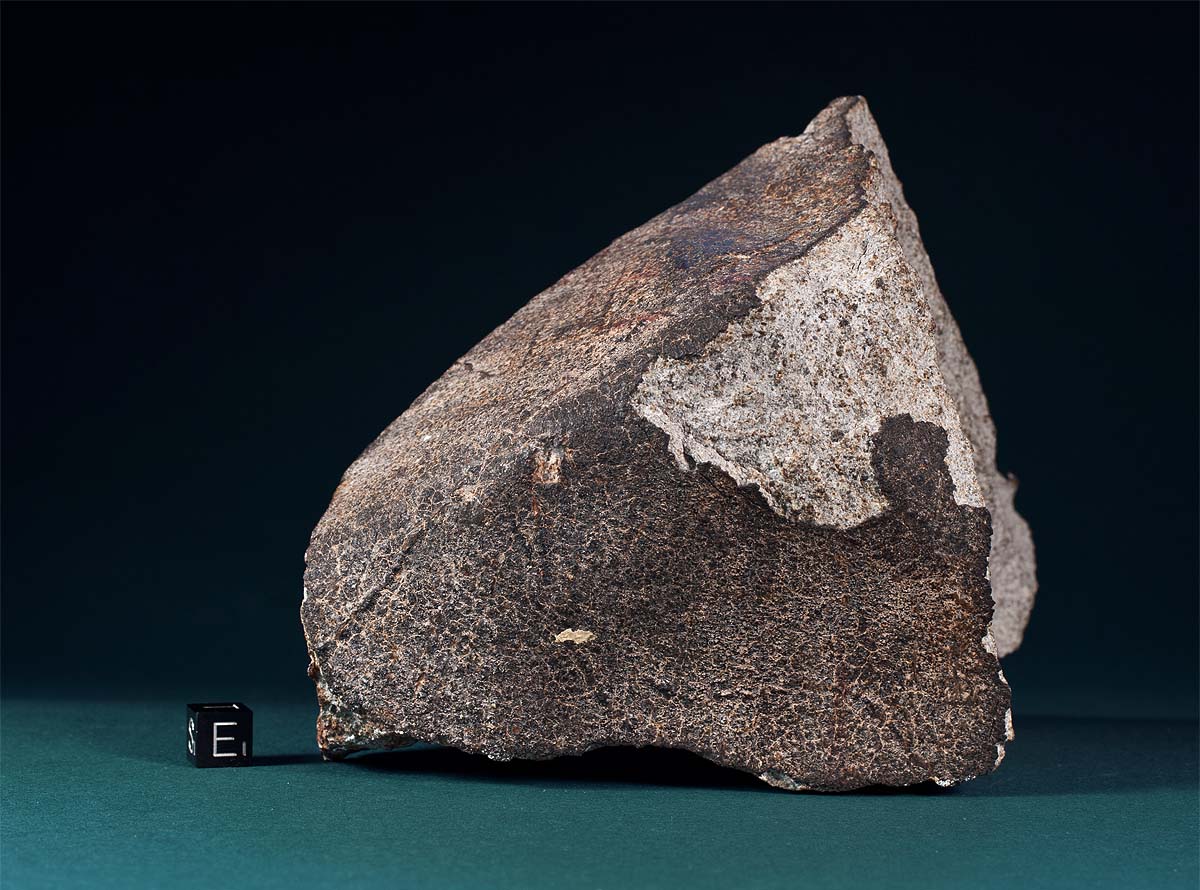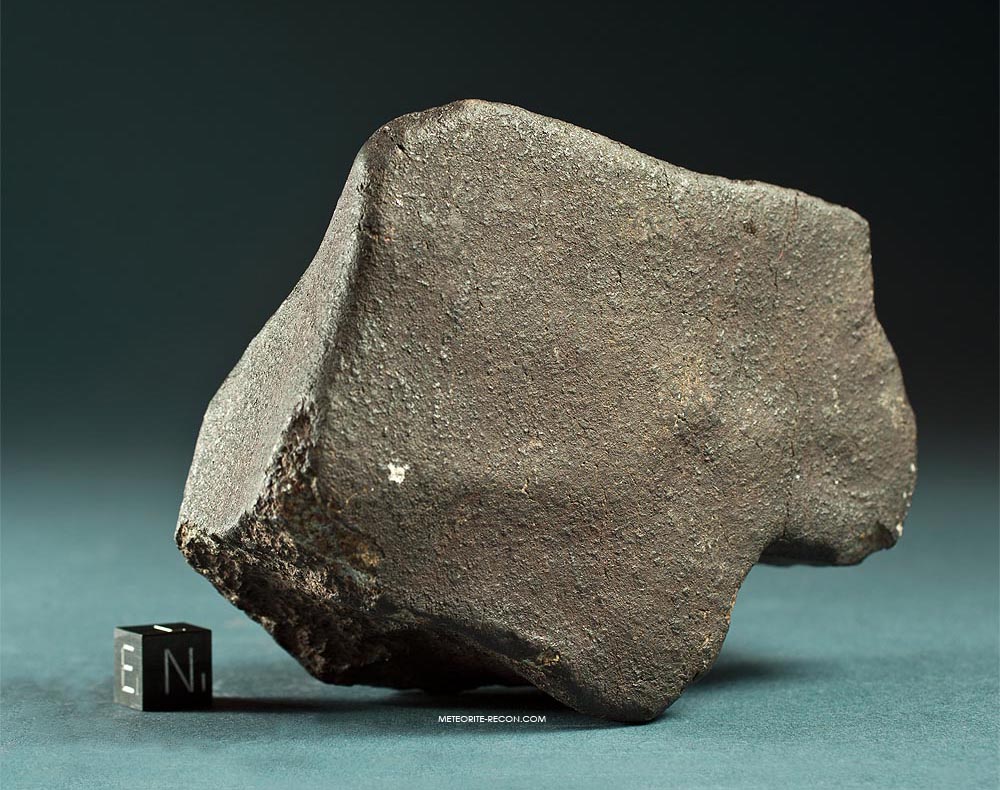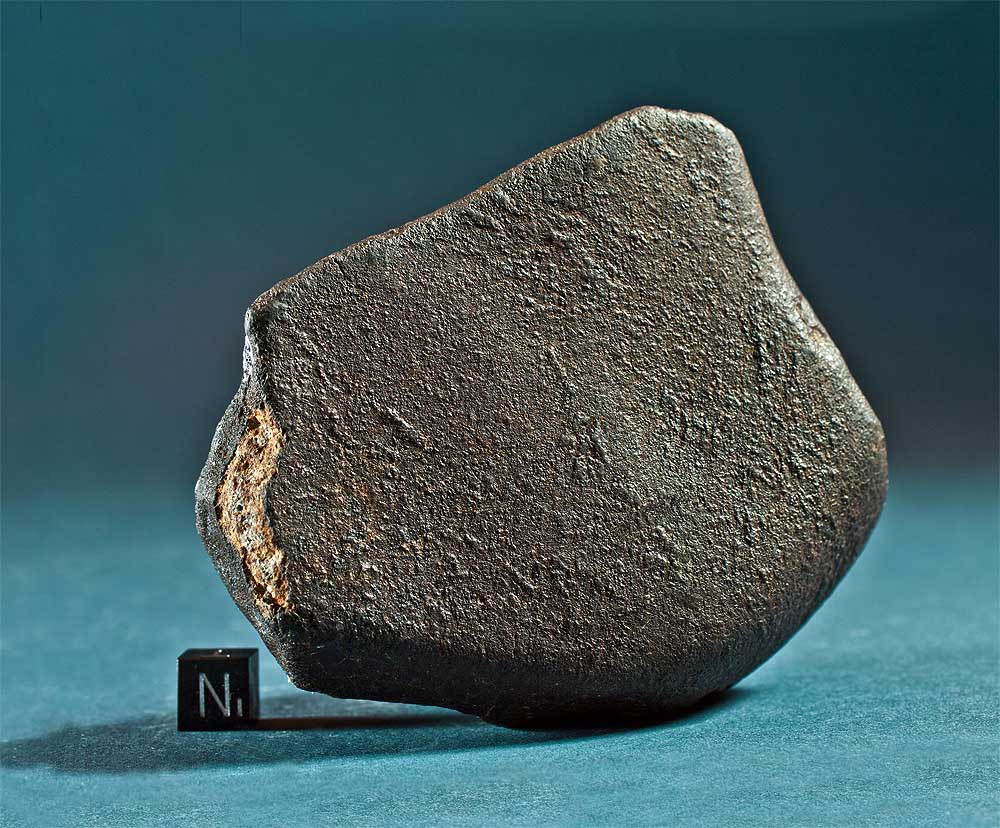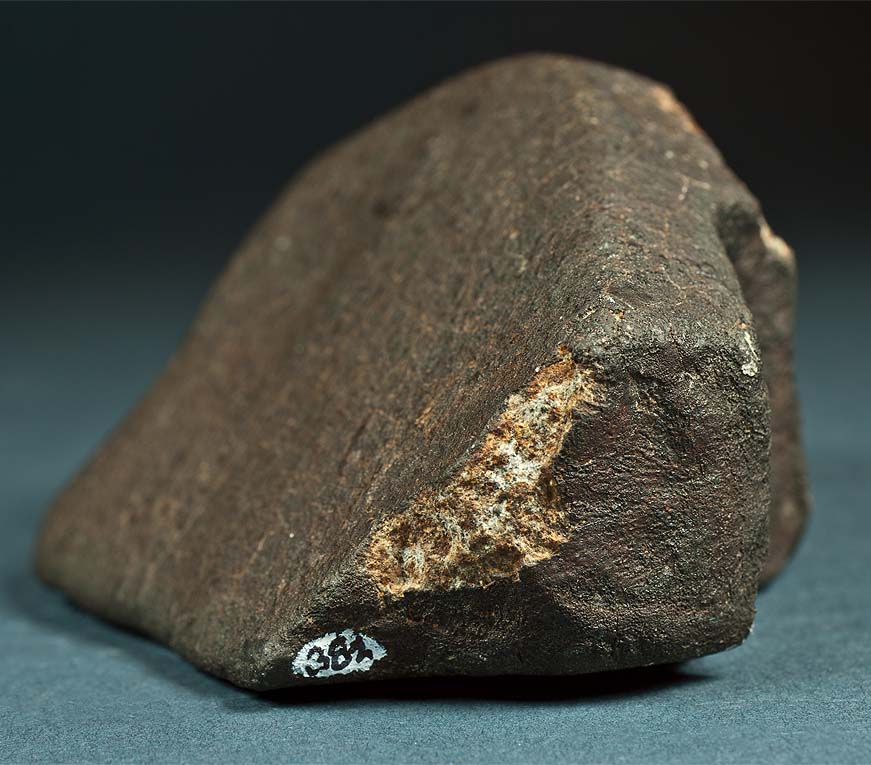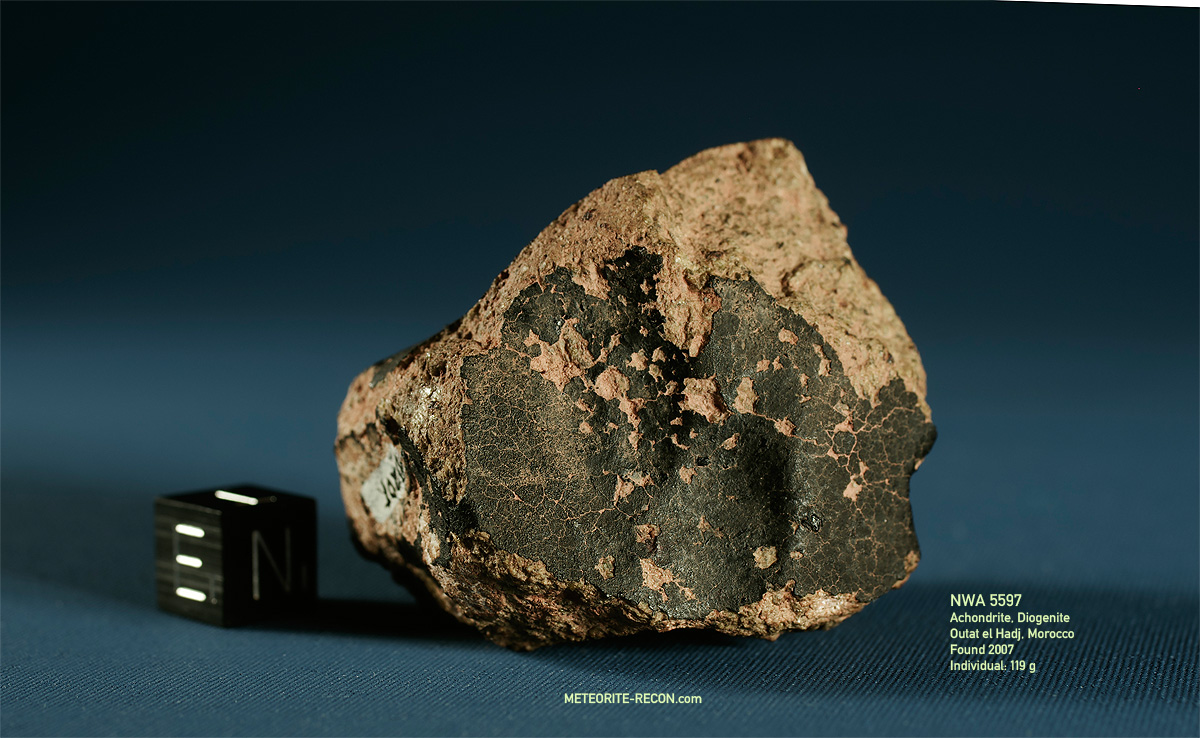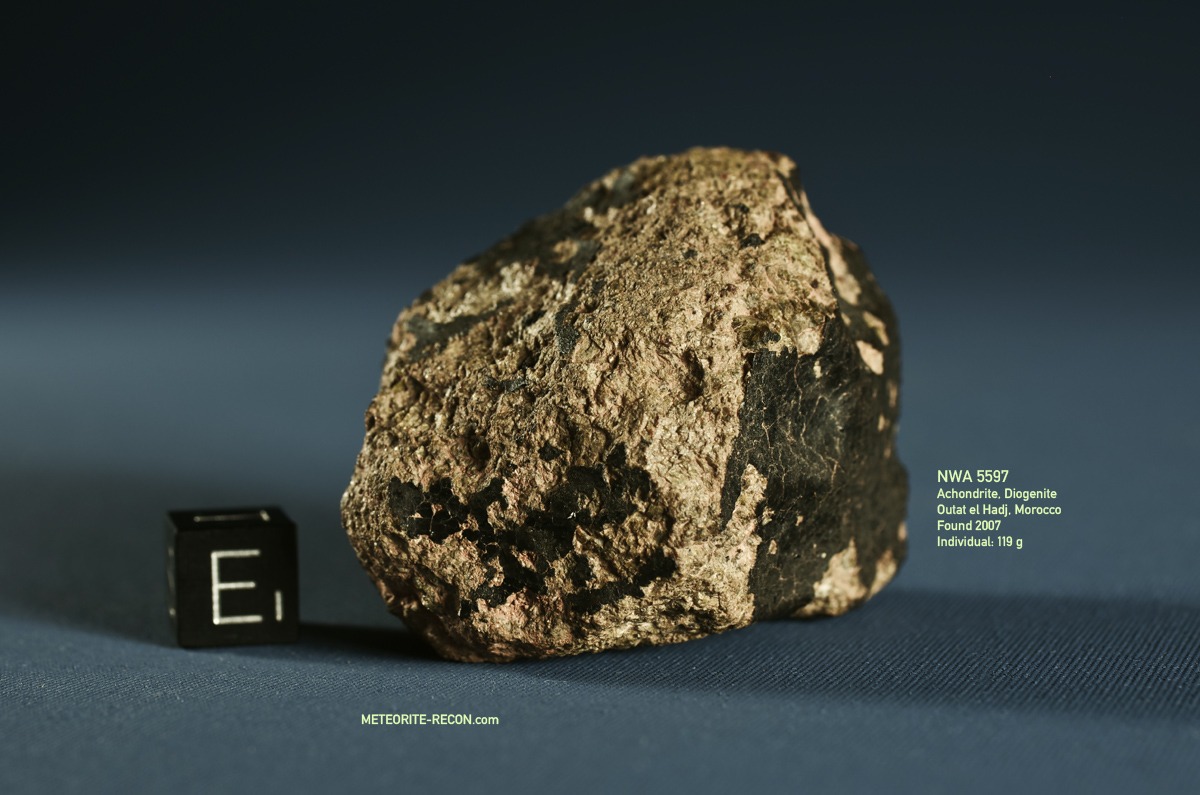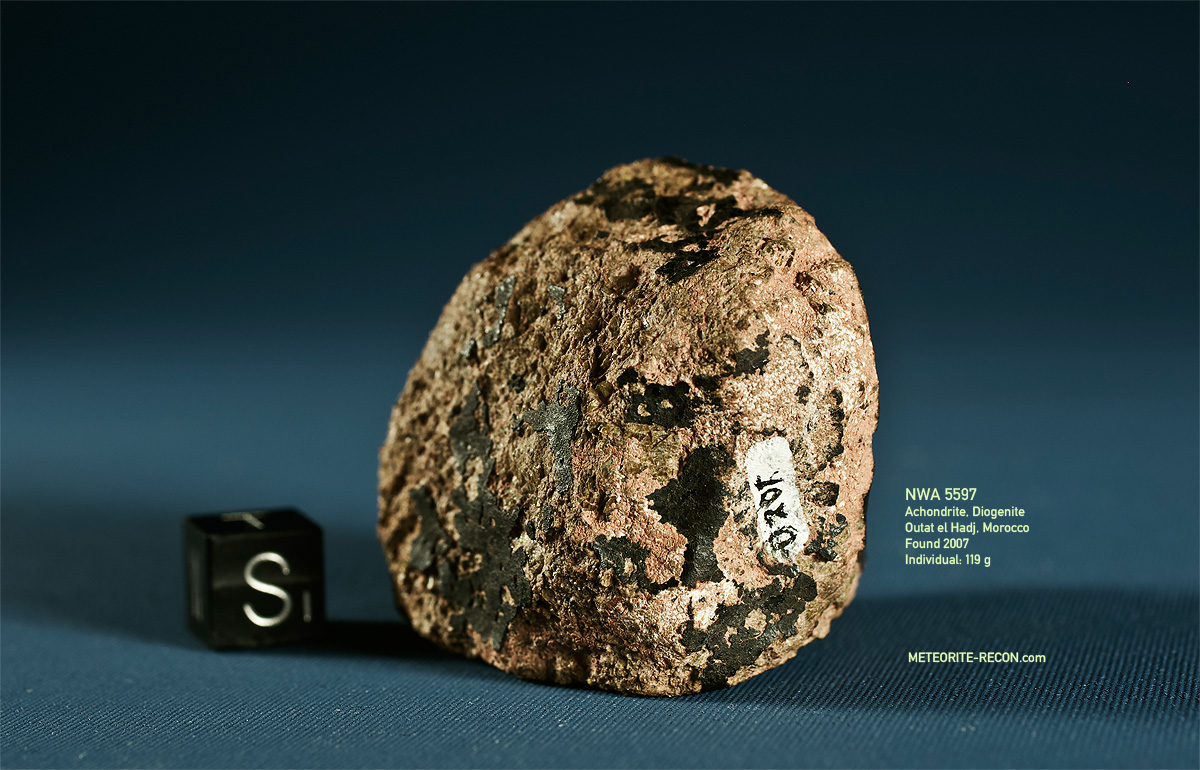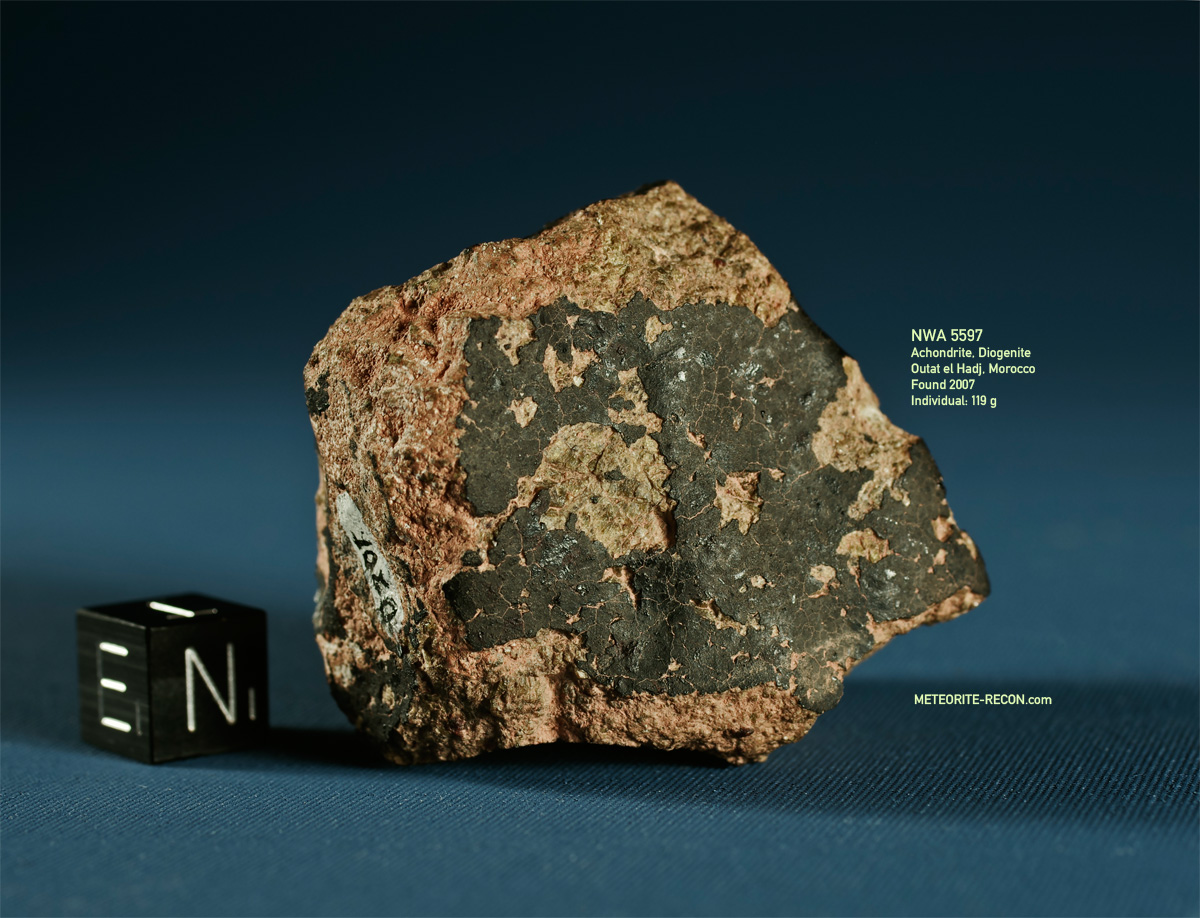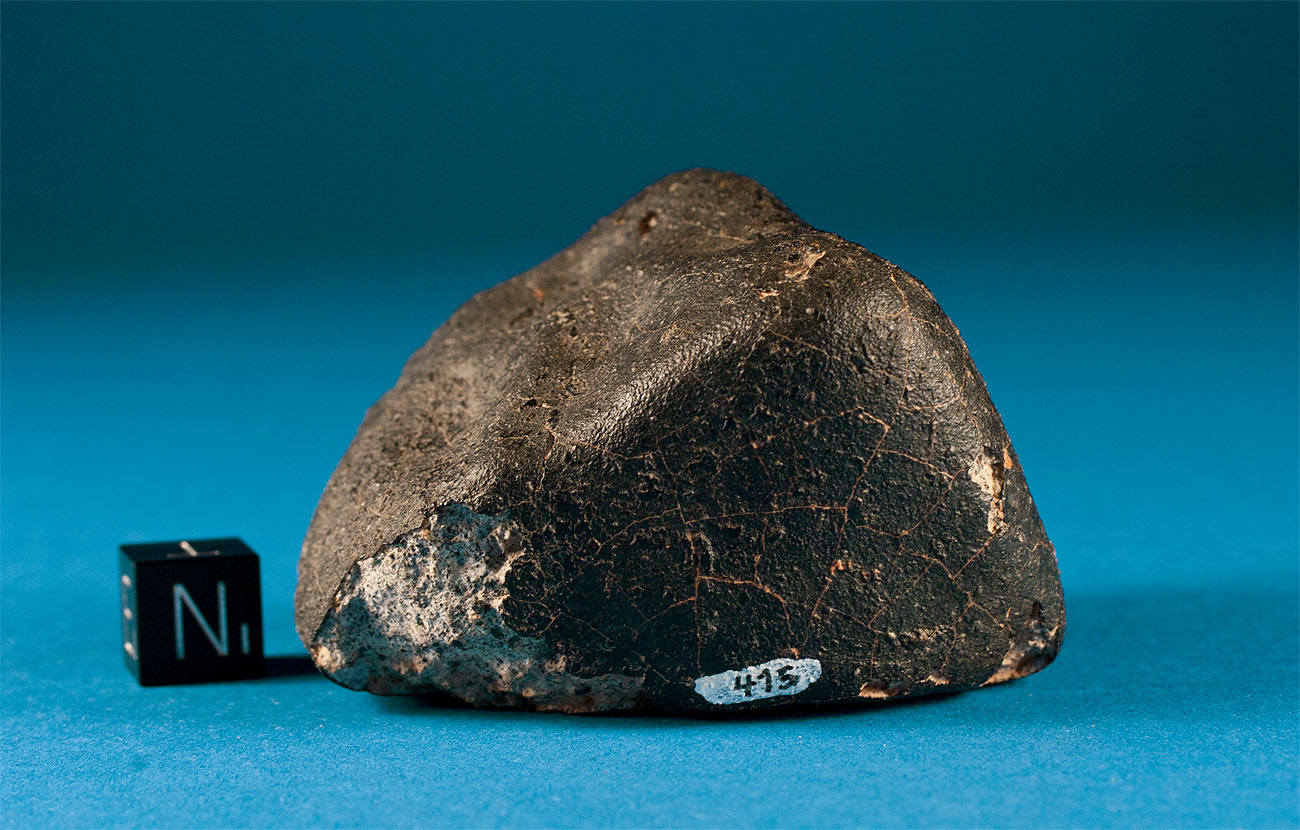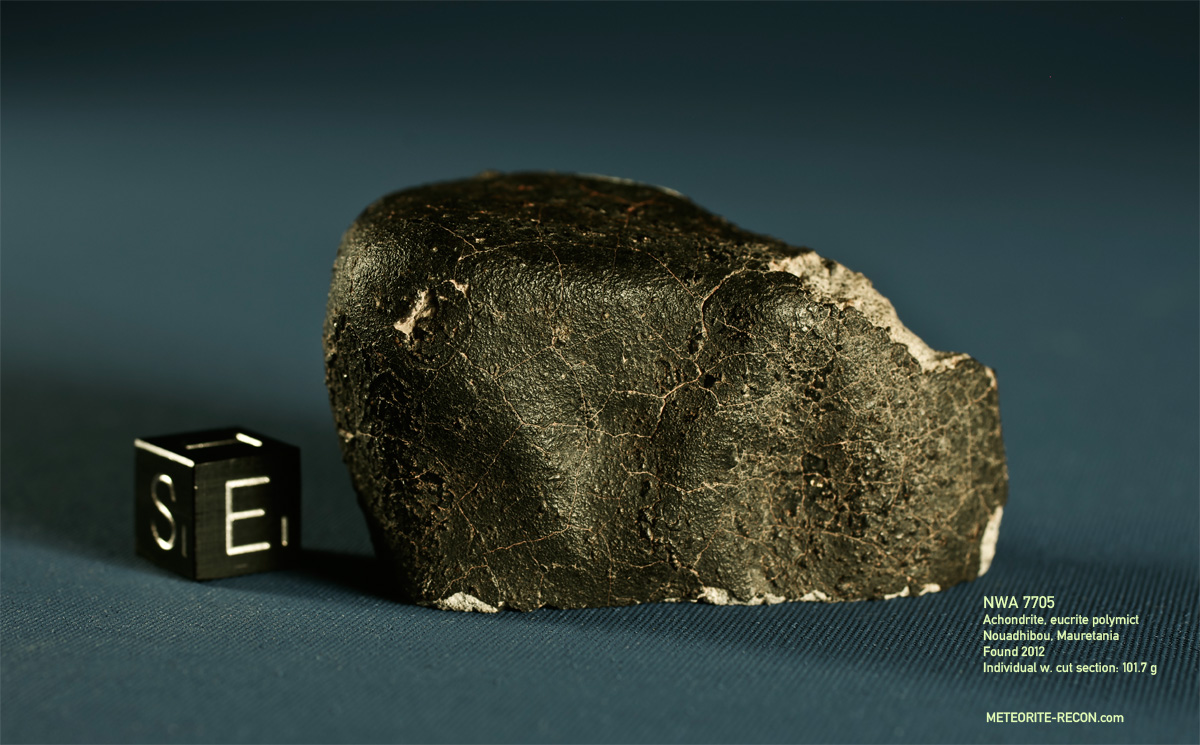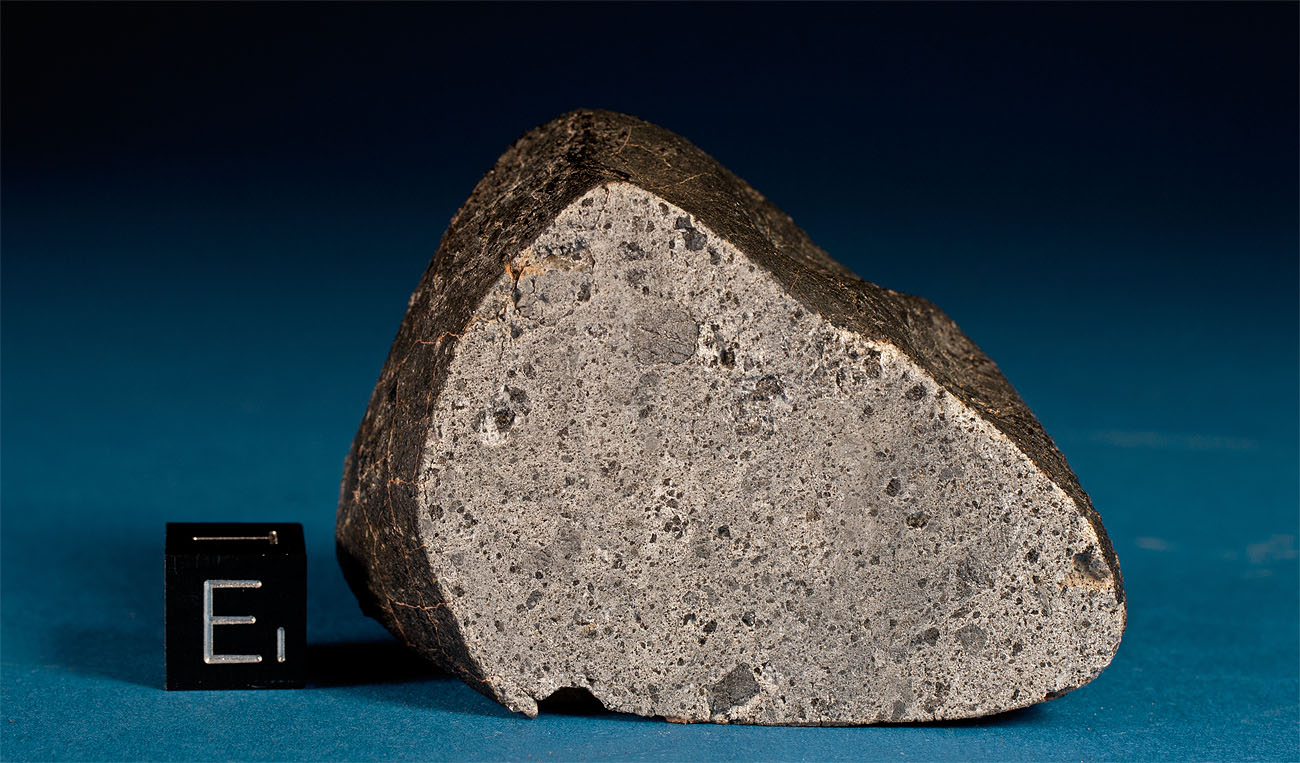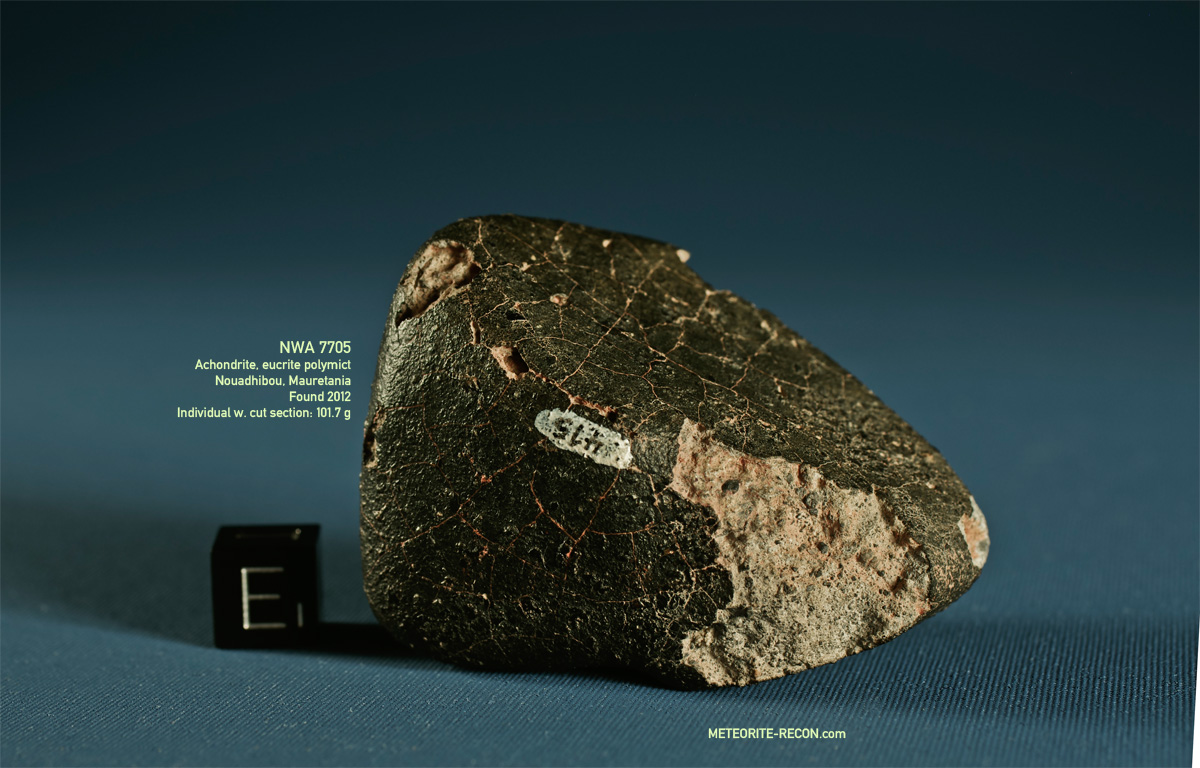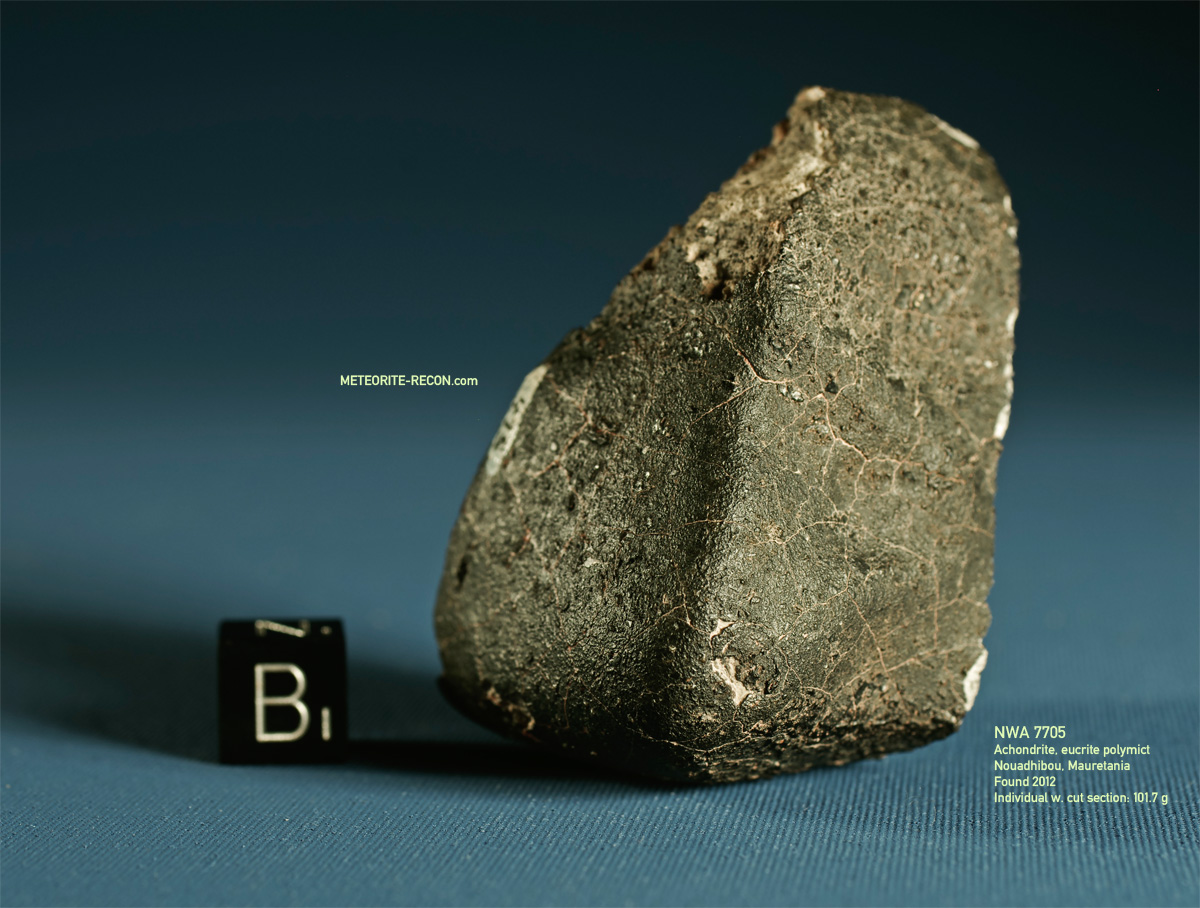Tafassasset
Stone, carbonaceous chondrite, (equilibrated CR-like) or primitive achondrite
Ténéré Tafassasset, Republic of Niger
Find: February 14, 2000
TKW: > 114 kg
Endcut: 267.0 g
Price / Trade value
€ 5,450
Aiquile
Stone, chondrite, H5, S3, W0
Cochabamba, Bolivia
Fall: 2016 Nov 20, 17:57 local time
TKW: > 50 kg
Individual with Impact marks: 277.0 g
„A bright fireball appeared over Aiquile, Cochabamba district of Bolivia, on 20 November 2016, 17:57 local time (UTC-4). Stones fell in a strewn field of at least 12 × 2 km (northeasterly direction) in the following Aiquile communities: Tablamayu, Panamá, Chawar Mayu, Chaqo K’asa, Barbechos and Cruz Loma. The main bolide fragmentation occurred over the Tablamayu community, 12 km north of Aiquile. In the Cruz Loma community, C. Veizaga witnessed the fall of the largest stone (36.3 kg) about 500 m from him. He recovered the stone and in the following day the local Aiquile government (Luiz L. Arnez, Marco Cardona, Franz Navia, William Rodriguez, Jesus Yave) took the stone to the city museum. In the Panamá community, Roberto Soto witnessed the fall and recovered two other fragments (565 g, 2.2 kg). SERGEOMIN (Miguel A. Muriel, G. Villca, A. Perez), UMSA (Gonzalo Pereira), Brazil NM collaborators (Andre R. Moutinho, José M. Monzon) and S. Medina found additional fragments in the Panamá community. A. Moutinho found a 98 g fragment which was used for classification.
This is a pristine 277 g individual of irregular shape with thick, black fusion crust and impact marks. It was found in the Panamá community (specimen exported before November 29, 2016).
Price / Trade value
€ 3,550
Aiquile
Stone, chondrite, H5, S3, W0
Cochabamba, Bolivia
Fall: 2016 Nov 20, 17:57 local time
TKW: > 50 kg
Individual: 49.0 g
This is a pristine 49 g individual of the Aiquile meteorite, shaped like a cobble stone with small, shallow regmaglypts on the two large surfaces, and thick, black fusion crust. One fragmented surfaced displays a window view onto the ash-grey matrix. Like the specimen pictured above, it was found in the Panamá community (specimen exported before November 29, 2016).
Price / Trade value
€ 730
Chergach
Stone, chondrite, H5 transitient to H impact melt breccia
SW El Mokhtar, Erg Chech, Timbuktu district, Mali
Fall: July 2007, daytime
TKW: ~100 kg
Individual: 492 g
In fall and winter, 2007 ~100 kg of meteorites were collected in the Erg Chech, north of Taoudenni. Nomads reported the stones fell after a smoke cloud was seen and several detonations were heard over a wide area during daytime in July 2007. The finder of the first meteorites was Mr Ouled Bleila. According to the Tuareg people from Algeria who visited the fall site in September 2007, the elliptical strewn field stretches for more than 20 km in a northeasterly direction. No fireball was reported. “Meteoritical Bulletin 94, 2008.
Price / Trade value
€ 3,150
SARATOV
Stone, chondrite, L4, W0
Saratovskaya Oblast, Russia
Fall: September 6, 1918
TKW: ~1 MT
Fragment: 2,554 g
October 6, 1918, about 5:00 in the afternoon: Startled by a bright flash, peasants all over the northern counties of Saratov Oblast looked up to what appeared to be a group of fireballs coming from the Samara Oblast and moving to the west in a shallow arc, impressively highlighted by the sinking sun. The sighting was followed by what was described as “a powerful roar”, perceived by some as the advent of the Last Judgement. Two large fragments of the meteorite, reportedly weighing 500 kg each, were later recovered from a depth of 2 meters, one near the village of Dongus in Volsky District, and the second close to a settlement near Petrovsky. According to the reports, a third mass that was seen to fall in the Khvalynsk area on the border of Samara Oblast remains missing to the present day. This specimen is a 2.5 kg Fragment from one of the 500 kg pieces dug out from the Impact pits. Specimen is uncleaned, red Russian soil is still adhering to the fresh fusion crust.
Price / Trade value
MAKER AN OFFER
Bassikounou
Stone, chondrite H5, S2, W0
Bassikounou, Hodh Ech Chargui, Mauretania
Fall: October 16, 2006, 04:00 hrs
TKW: > 93.85 kg
Individual 581.0 g
„A fireball was witnessed in the area, but no records of the direction of movement were recorded. A single stone of 3,165 g was found by A. Salem El Moichine, a local resident, on the same day at 13:00 hrs local time. The sample for classification was provided to NMBE by M. Ould Mounir, Nouakchott, who obtained it from his cousin who recovered the meteorite. According to S. Buhl (Hamburg, Germany), more than 20 specimens were later recovered by locals and meteorite finders. These finds define a 8 km long strewnfield. The total recovered mass is 46.00 kg.“ (Meteoritical Bulletin, no. 92). This is a pristine wedge-shaped fragment with 90 percent fusion crust and distinct flowlines on its largest surface. Flowlines and frothing can also be seen on one of the trailing surfaces. One fractured surface shows tertiary fusion crust developed at the latest stage of the hot flight.
Price / Trade value
€ 1,450
Northwest Africa 5597
Stone, achondrite, diogenite-olivine
Outat el Hadj, Morocco
Find: 2007
TKW: 171.5 g
Individual: 119.0 g
Johnstown-like, monomict brecciated diogenite with a matrix dominated by coarse pyroxene. This is an uncut individual with some 40 -50 % percent fusion crust preserved. Although it would make for spectacular slices, I did not have the heart to destroy it, as this specimen is the only remaining intact mass of NWA 5597, it’s two smaller brothers were all cut up. With its unique texture, olive-green matrix and patchy fusion rind, this rare HED achondrite is an exceptional collection specimen.
Meteoritical Bulletin
(Click to view entry)
Price / Trade value
€ 1,750
Northwest Africa 7705
Stone, HED achondrite, eucrite polymict
Nouadhibou, Mauretania
Find 2012
TKW: 124.0 g
Half individual: 101.70 g
Fresh (W-grade=low) half individual with polished cut surface, displaying a dark-grayish interior with easily discernable lithic clasts. “Lithic clasts include basaltic and melt lithologies; mineral fragments are dominantly large exsolved pyroxenes and clacic plagioclase. SiO2, chromite, troilte and rare FeNi metal are minor constituents” (write up, Meteoritical Bulletin 102). The specimen shows moderately wind-polished fusion crust with delicate contraction cracks. Great type and display specimen.
Geochemistry: Opx: Fs55.8-58Ws1.6-3.5, FeO/MnO=31-35; cpx: Fs23.3-26.1Wo44-44.6, FeO/MnO=29-35; calcic plagioclase: An86.8 (range An80.7-90).
Price / Trade value
€ 1,250



